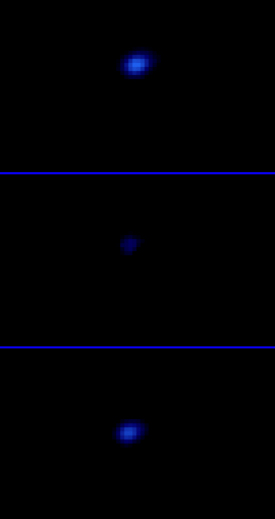The space probe Gaia has compiled a detailed volume map of our galaxy.

The Gaia Space Telescope (Global Astrometric Interferometer for Astrophysics), launched in 2013 by the European Space Agency, helped create the most accurate three-dimensional map of our galaxy. The number of stars cataloged and deposited on this map now amounts to more than a billion. Among others, scientists have mapped and the stars, whose brightness is 500,000 fewer stars, which can be viewed with the naked eye from Earth.
The exact number of identified stars on the map is 1142 million. “Gaia is the forefront of astrometry , this telescope is studying the galaxy with an accuracy that has become achievable only now,” said Alvaro Jimenez, ESA's scientific director (European Space Agency).
Launched a telescope more than 1000 days ago. He began working in July 2014. The current map is the result of the operation of the system for the first 14 months, up to September 2015. The data obtained by the telescope after this point is still being processed.
')
“The map we published today shows the density of stars measured by Gaia in the entire sky, and confirms the excellent results of this system for the first year,” said one of the Gaia project participants Timo Prusti. In the images obtained by the telescope, there are several artifacts that will be corrected after additional data processing with Gaia. “The space telescope works fine, we showed the possibility of analyzing a billion stars. Although the current data is preliminary, we want to provide it to the scientific community as quickly as possible. ”
The preliminary data set for the Milky Way stars (DR1) contains information about the properties of stars that are similar to the Sun in size and spectrum. There are no data for other stars yet, but they will be added to the next data set (DR2). Information will also be added on planets and asteroids. According to some experts, all these data help scientists study the galaxy and reveal its secrets. In particular, Gaia helps to understand how stars like the Sun are born and how ordinary clouds of molecular hydrogen turn into the furnace of new stars.
The transformation of the data obtained by the telescope into a detailed star map with the determination of the coordinates of the stars with high accuracy was possible not only due to the development of technology, but also through the cooperation of 450 scientists who are associated with this project. Participate in the project and software developers who have created a software platform for processing data transmitted by the telescope.

Gaia (Photo: ESA / ATG)
In addition to the main task, that is, the mapping of hundreds of millions of stars, scientists completed another one. They clarified the position and a number of characteristics of about two million stars, which are contained in the Hipparcos and Tycho-2 catalogs (TGAS - Tycho-Gaia Astrometric Solution). These catalogs have been used by astronomers for about two decades.
Gaia data were combined with information from these directories, which made it possible to obtain more accurate data on the distance to these two million stars. The new catalog is much more accurate and contains many times more stars than previous versions. Experts also conducted a study of open star clusters - groups of relatively young stars that are born nearby from each other.
“Using data from the Hipparcos catalog, we can analyze the 3D structure and dynamics of stars in the Hades cluster closest to the Sun, and also determine the distance to about 80 clusters located 1600 light years from us,” says Antonea Weihenari of INAF ). With data that the Gaia Space Telescope receives, astronomers can study the distances to stars and the dynamics of stars in more than 400 clusters that are about 4,800 light-years from us. For the next 14 open clusters, Gaia project participants obtained new valuable data that will help clarify a number of issues.
New data revealed some nuances of star formation. For example, in the 14 nearest clusters, scientists saw a large number of stars that leave the center. Astronomers have suggested that they move from a cluster to external areas, leaving their place of birth. Probably in the near future, experts will discover a large number of new star clusters.
The “star census”, conducted by Gaia, made it possible to open 3194 stars with a cyclic change of luminosity and size change. The probe saw many such stars in the Large Magellanic Cloud, one of the neighboring galaxies. Some of the information about these stars is published by the European Space Agency.
This is valuable data, because variable stars are for scientists a kind of beacons that allow you to accurately determine the distance both to them and to other objects. An example of variable stars are Cepheids . This is a class of pulsating variable stars with a fairly accurate dependence of the period — the luminosity, named after the star δ Cephei. One of the most famous Cepheids is the North Star.
Gaia helps to study and objects in the Solar System. For example, in July, the space telescope allowed astronomers to analyze a rare phenomenon - the passage of Pluto through the disk of a remote and weak star. As a result, managed to perform a series of observations of the atmosphere of Pluto.

The Gaia telescope has the largest digital sensor ever created for spacecraft. This sensor is composite, its elements are 106 individual CCD-matrices with a size of 4.7 * 6 m. The resolution at the same time can reach 938 million pixels. As for the optical scheme of the telescope, it consists of two mirror systems with the size of the main mirrors of 1.46 by 0.51 meters. Each telescope has 6 mirrors. The cost of the mission is 577 million euros. According to the plan, Gaia will work for five years.
Source: https://habr.com/ru/post/397467/
All Articles